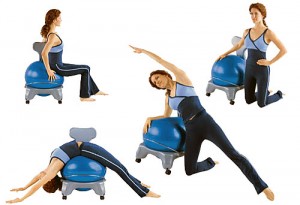Most people are unaware that the placement of their computer monitor can affect their body’s health. Not knowing a good ergonomic way to set up a workstation can take a toll on an employee’s neck and back. Many people suffer eyestrain, back pain and headaches unnecessarily and simple things can be done to improve their health.
The first thing you should consider is monitor placement. For most workstations, the best position is centered in front of them since putting the monitor off-center can cause neck and shoulder pain from twisting and sitting in an awkward position. However, there are exceptions. An employee may have several interactions with others across a desk, like a bank teller or manager. They may want to keep the monitor to the side as to not interfere with their communications. A good solution for that is to put the monitor on a swivel arm.





